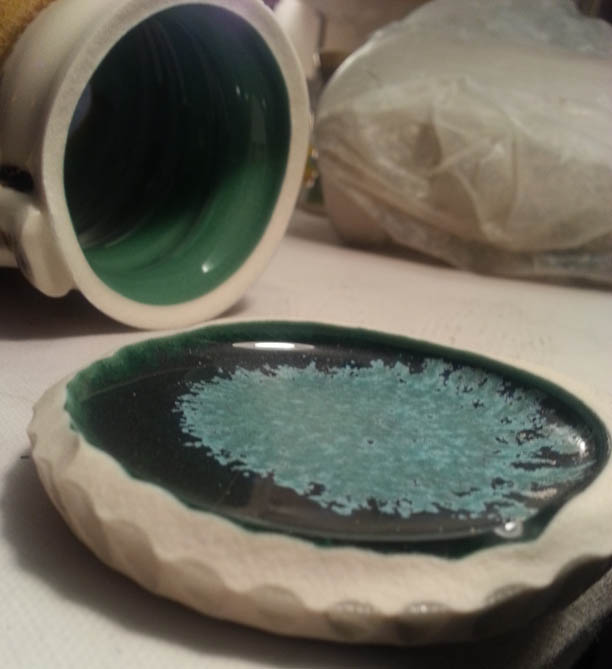The glaze broke the bottom off the pot!
An example of a highly fluid cone 6 glaze that has pooled in the bottom of a mug (and crystallized). Glazes normally need to be under some compression to avoid insight-live.com/trouble/2">crazing (by having a lower-than-the-body thermal expansion), but if they are thick like this the body does not have the strength to resist the extra outward pressure the glaze can be exerting at the base from the inside. The result here is a separated base. Conversely, if the glaze is under tension (having too high an expansion), the cracks that develop within it to relieve the tension are deep and wider and thus more likely to propagate into the body. The ultimate result: Poor ware strength and durability. A better solution is to use a liner glaze.
Pages that reference this post in the Digitalfire Reference Library:
Fired Strength, Glaze Compression

This post is one of thousands found in the Digitalfire Reference Database. Most are part of a timeline maintained by Tony Hansen. You can search that timeline on the home page of digitalfire.com.
